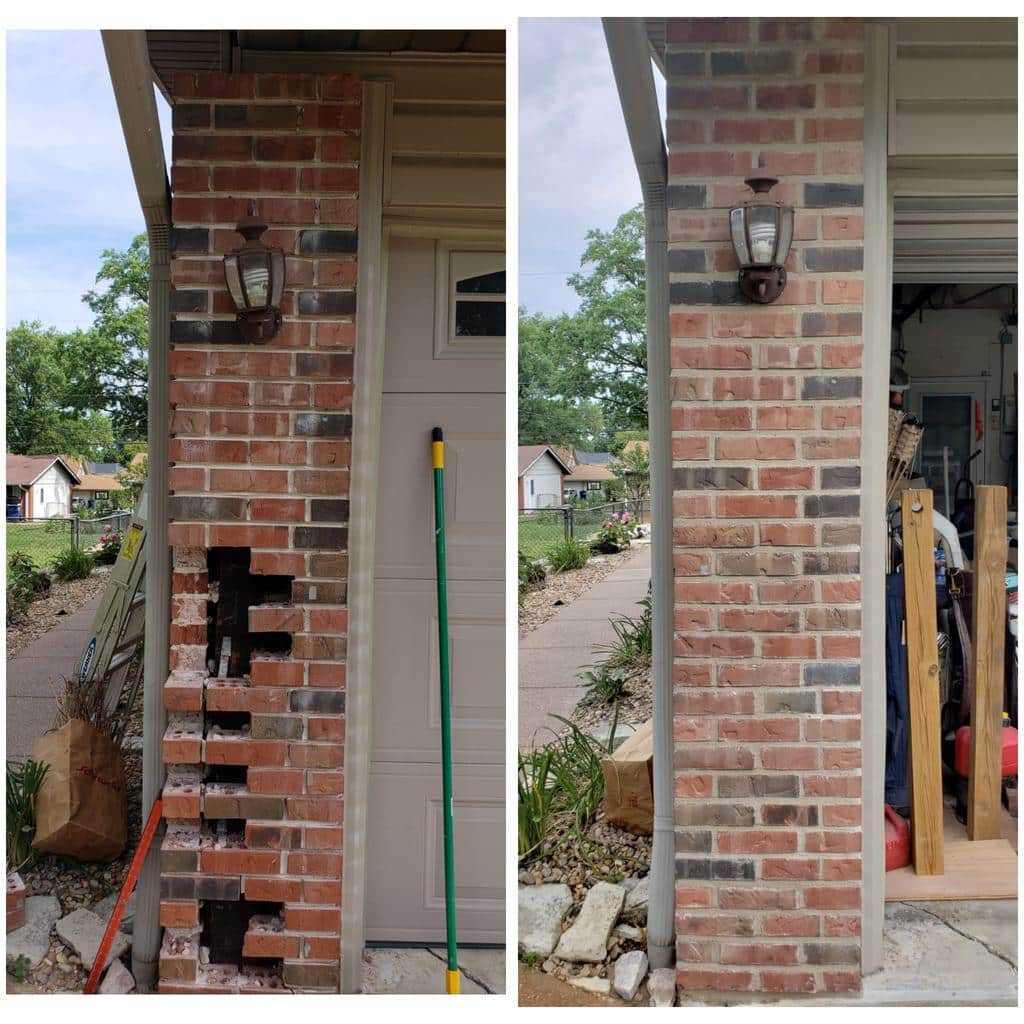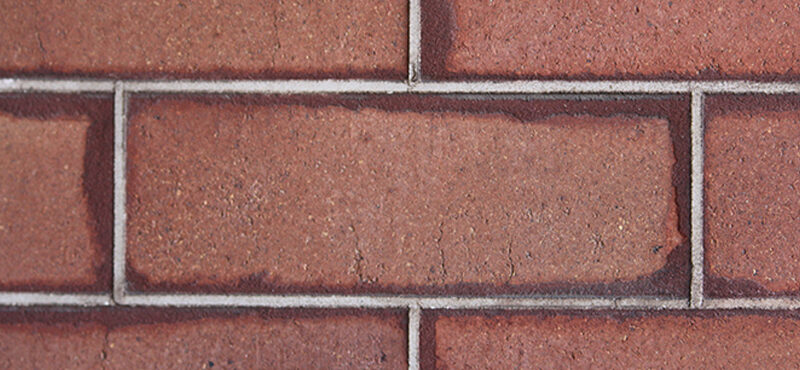Safeguard Your Investment with Raul's Tuckpointing St. Louis MO Services: Trusted Masonry Repair Works
Wiki Article
Boost the Appeal and Durability of Your Brickwork With Tuckpointing
Brickwork has long been respected for its classic appeal and toughness. Over time, the mortar that holds those bricks with each other can weaken, leaving your structure susceptible to harm and taking away from its visual charm. But concern not, for there is a remedy that can recover both the appeal and resilience of your brickwork: tuckpointing. This age-old technique not only improves the aesthetic charm of your brickwork, yet likewise strengthens its structural integrity. But exactly what is tuckpointing and just how does it differ from repointing? And just how can you guarantee that your tuckpointed brickwork stays in beautiful problem? In this discussion, we will certainly discover the essentials of tuckpointing, its advantages, the difference in between tuckpointing and repointing, the process itself, and the key techniques for preserving and caring for tuckpointed brickwork.The Basics of Tuckpointing
Tuckpointing is a knowledgeable technique used to enhance the appearance and fix and architectural honesty of brickwork. It includes the process of getting rid of deteriorated mortar joints and changing them with fresh mortar. The term "tuckpointing" describes the practice of making use of two different shades of mortar to create the impression of fine joints, offering the brickwork a much more refined and cosmetically pleasing appearance.
The primary step in tuckpointing is to carefully assess the condition of the brickwork. This includes evaluating the mortar joints for indications of degeneration, such as breaking, crumbling, or missing out on mortar. As soon as the issue locations have actually been identified, the old mortar is meticulously gotten rid of utilizing specialized tools, such as a grinder or carve, while making sure that the bricks themselves remain undamaged.
After the old mortar has been removed, the following step is to prepare the joints for fresh mortar. This commonly entails cleaning out any particles or loosened material and wetting the joints to ensure appropriate adhesion. Then, a knowledgeable tuckpointer makes use of a directing trowel to thoroughly fill up the joints with fresh mortar, making certain to create a consistent and flush surface.
Advantages of Tuckpointing
Improving both the durability and look of brickwork, tuckpointing offers several significant benefits for house owners and homeowner alike. One of the primary advantages of tuckpointing is its capacity to extend the life-span of brick frameworks. By replacing scrubby mortar joints, tuckpointing protects against wetness from seeping into the brickwork, which can result in architectural damages over time. This assists to keep the honesty of the brickwork and extend its total durability.Over time, mortar joints can come to be cracked, faded, or blemished, taking away from the overall appearance of the brickwork. Tuckpointing entails carefully eliminating the harmed mortar and replacing it with fresh mortar of a contrasting color.
Along with enhancing the long life and appearance of brickwork, tuckpointing can also raise the value of a property. Well-kept brickwork is seen as a preferable function by prospective customers and can significantly boost the visual allure of a residential property. This can lead to a greater market price and a quicker sale when the time concerns put the residential property on the marketplace.
Tuckpointing Vs. Repointing: What's the Difference?

To compare tuckpointing and repointing, it is very important to comprehend the crucial differences between these 2 approaches of brickwork restoration. While both methods intend to maintain the architectural honesty and aesthetic allure of brickwork, they vary in their method and execution.
Tuckpointing is a precise procedure that entails applying two various shades of mortar to create the illusion of fine joints. This strategy is primarily utilized to enhance the visual allure of brickwork by creating the appearance of well-maintained and well-crafted joints. The tinted mortar is carefully used and shaped to match the color and account of the initial mortar, offering the impact of precision and craftsmanship.
On the various other hand, repointing is a much more straightforward process that involves getting rid of damaged or scrubby mortar from the joints and replacing it with fresh mortar. The key objective of repointing is to recover the structural integrity of the brickwork by ensuring appropriate bonding and securing in between the blocks. Unlike tuckpointing, repointing does not include the usage of colored mortar or the production of an ornamental result.
The Refine of Tuckpointing
The application of two look at more info various shades of mortar to produce the illusion of great joints is a precise process referred to as tuckpointing. This strategy entails getting rid of worn-out mortar joints and changing them with brand-new mortar to boost the look and architectural honesty of the brickwork. The procedure of tuckpointing can be split into several special info actions.First, the old mortar is carefully removed using specialized tools such as chisels and grinders. It is very important to eliminate the mortar to an enough depth to guarantee a solid bond with the brand-new mortar.
Next, the joints are completely cleansed to remove any type of particles or dirt. This helps to develop a tidy surface for the new mortar to adhere to.
As soon as the joints are cleansed, a thin layer of new mortar is put on the joint making use of a tiny directing trowel. This preliminary layer, called the "pointing up" mortar, is typically the exact same shade as the existing mortar.
After the first layer has actually been applied, a second layer of mortar is applied in addition to it. This 2nd layer, called the "fillet" mortar, is a different shade and is very carefully formed to produce the impression of a great joint.

Caring and preserving for Tuckpointed Brickwork
When the tuckpointing procedure is completed, appropriate maintenance and care are vital to protect the enhanced beauty and resilience of the brickwork. This maintenance not just makes sure that the tuckpointed areas remain undamaged and practical however also aids to avoid any type of potential damages to the general structure.Among the essential aspects of keeping tuckpointed brickwork is routine cleaning. This entails getting rid of any type of dirt, debris, or moss that might collect on the surface of the blocks. A low-pressure power or a soft brush washer can be made use of for this function. It is very important to stay clear of utilizing any extreme chemicals or abrasive devices that could possibly damage the mortar or the blocks themselves.
Along with cleansing, it is important to check the tuckpointed locations regularly. This permits for the early discovery of any indications you could try here of deterioration or damage. Any kind of cracks, loose mortar, or indicators of water damage need to be resolved without delay to avoid further damage.
In addition, guaranteeing correct drain around the brickwork is crucial. Water pooling or improper drainage can cause moisture penetration, which can damage the mortar and cause architectural damage. Clearing up downspouts and rain gutters on a regular basis and making sure that they are appropriately directed far from the brickwork can assist stop these concerns.
Lastly, it is recommended to seek advice from an expert tuckpointing contractor for normal repair and maintenance. Their competence and experience can make sure that any kind of essential fixings are done correctly, maintaining the integrity and long life of the tuckpointed brickwork.
Verdict
In conclusion, tuckpointing is a valuable method for improving the appeal and durability of brickwork. Tuckpointing involves the removal and substitute of scrubby mortar, resulting in a tidy and consistent appearance.
It involves the process of eliminating shabby mortar joints and replacing them with fresh mortar. Raul's Tuckpointing St. Louis MO.After the old mortar has been eliminated, the next step is to prepare the joints for fresh mortar. Tuckpointing entails meticulously eliminating the damaged mortar and changing it with fresh mortar of a different shade. The tinted mortar is thoroughly applied and shaped to match the shade and account of the original mortar, providing the impression of accuracy and craftsmanship

Report this wiki page